Learn about different types of elastic – woven, braided, knit, non roll, etc and when to choose each type for specific uses.
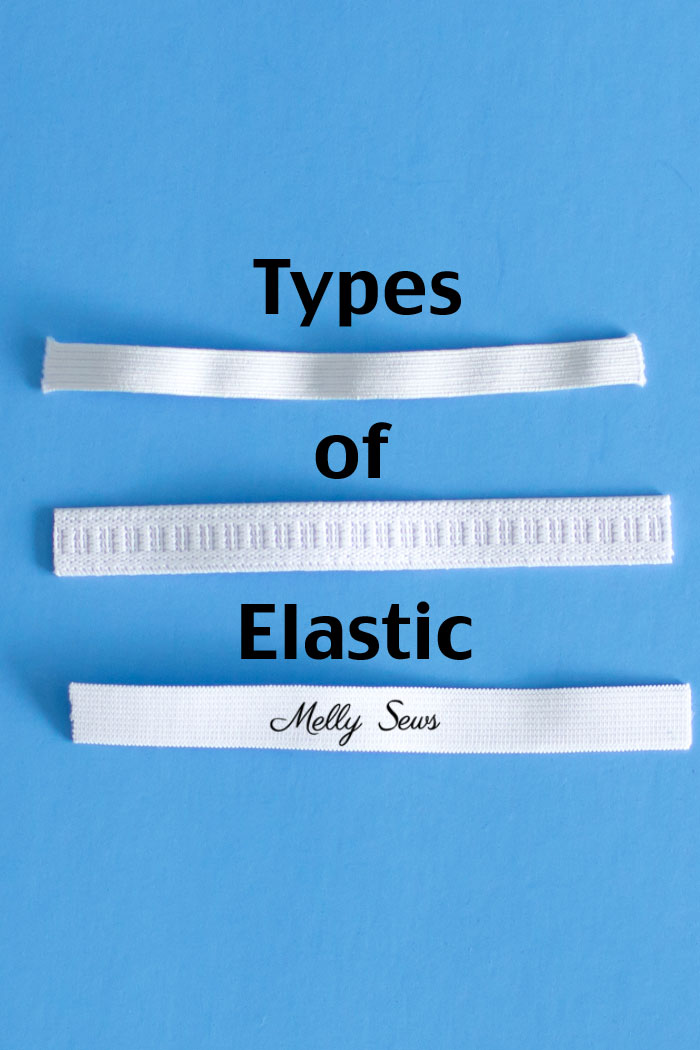
Hey y’all, today we’re going to talk about types of elastic. Have you ever been confronted with a wall of elastic at the store or hundreds of online choices? This can be intimidating for a beginner, so today’s post is meant to demystify those choices. I’ve learned a thing or two about elastic in my decades of sewing, so I’m sharing everything you need to know to make the right choice for your project.
Types of Elastic
There are three basic types of elastic: braided, woven and knitted. These refer to how the yarns are put together, and the different methods of construction give the resulting elastics different properties.
Let’s look at them more closely.
Braided Elastic
Braided elastic has lengthwise, parallel ridges. Those ridges make this elastic have more “grip” but they also mean that braided elastic tends to narrow as it is stretched. Braided elastic also rolls more easily than woven or knitted elastics, and tends to lose stretch if it is sewn through. For this reason braided elastic is typically recommended for use in casings, not for sewing directly to fabric. But in some casings (like waists) braided elastic isn’t the best choice because of its tendency toward rolling. It’s better in sleeves, necklines, or other areas where rolling isn’t a big issue.
Knitted Elastic
Knitted elastic is made by knitting the fibers together. Knit elastic tends to be softer than braided or woven elastic, and it retains its width when stretched. It also works well even when pierced by needles, so it’s a good choice for sew on applications. It rolls more than woven elastic, but less than braided elastic. Since this elastic is softer, it’s suitable for light to midweight fabrics, but doesn’t have the grip needed for heavier fabrics. With knit elastic, I may cut the elastic slightly shorter than the finished measurement in order to have it grip properly, particularly when I use it for waistbands or bra bands.
Woven Elastic
Also referred to as non-roll elastic, woven elastic is usually the firmest of the three basic elastic types. It retains width as it is stretched, and is suitable for sew on applications as well as use in casings. Because it tends to be very firm, it is also suitable for heavier weight fabrics. I generally don’t cut woven elastic with much negative ease, because it will pull too much. In other words, if I’m using it in a waistband, I’ll cut the elastic to the body measurement where the waist hits, not any less.
Special Types of Elastic
Here are some of the specialty elastics you might find or use. Note that I have a video and project demonstrating use of lace lingerie and fold over elastic here.
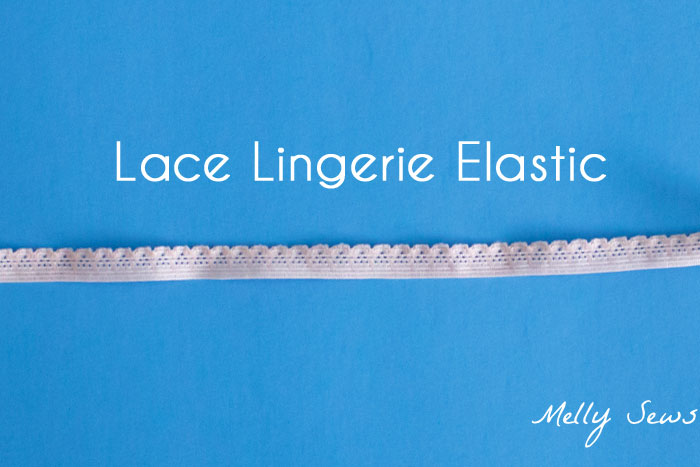
Lace Lingerie Elastic
This elastic is used in lingerie, as the name implies. It’s soft with pretty finish details that are meant to show on the right side of the project. It can also be called picot elastic as the pointy shapes on one side are called picots.
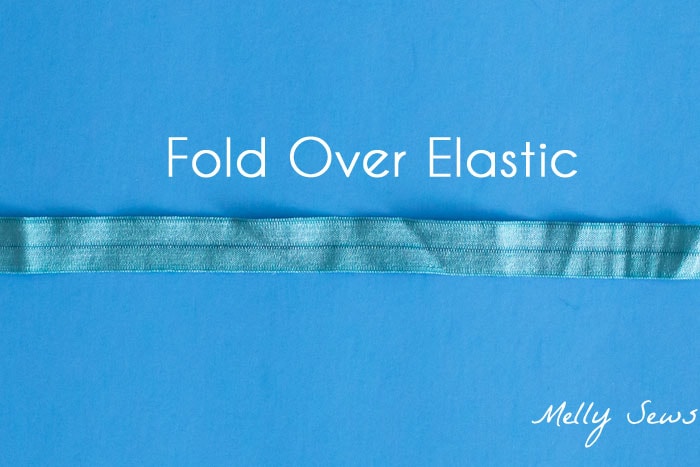
Fold Over Elastic
This type of elastic is meant to fold over a raw edge to finish it. It is used both on underwear and outer garments. It’s also a popular type of elastic for headbands and hair ties.
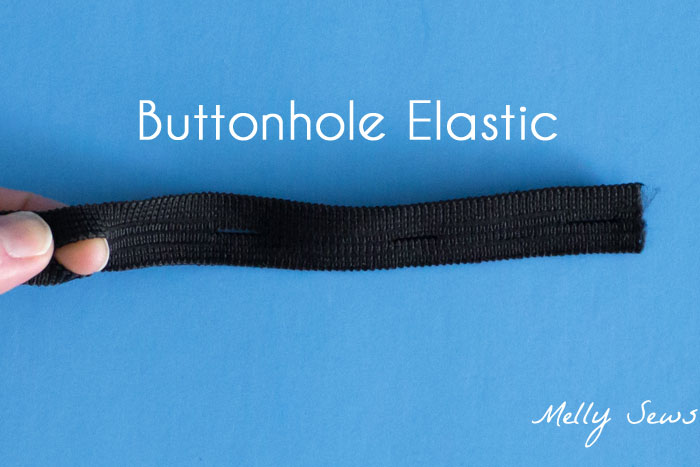
Buttonhole Elastic
This type of elastic is mostly used in waistbands. It has buttonholes in it, so that the tightness of a waist can be adjusted by looping a different buttonhole over an interior button.
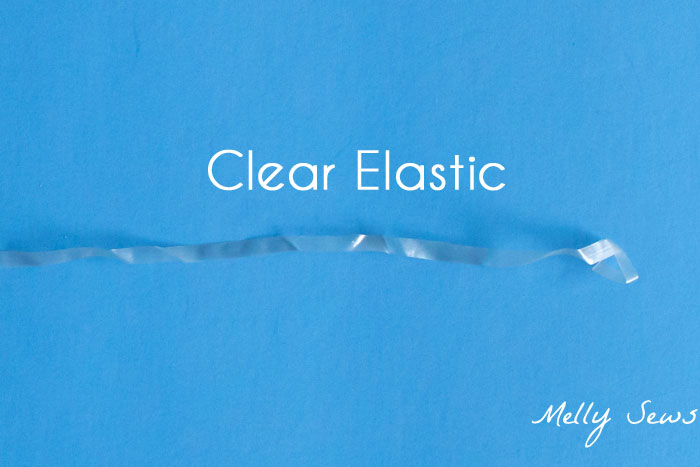
Clear Elastic
Clear elastic has two main uses – it is often used to stabilize or gather knits, and it is often used to help an area of a garment stay in place on the body. It can be stitched on, and is used in swimwear and lingerie to keep bands in place, because it has more friction with the body than the fabric-like elastic types.
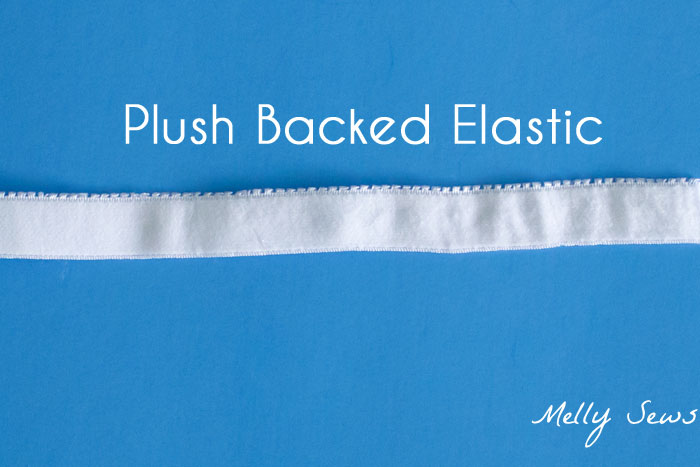
Plush Backed Elastic
This is a knitted elastic, typically used in lingerie, that has a plush backing to be extra soft against the skin. I used it in this project as well as for bra bands.
Fiber Content
In general, elastic is made of polyester and rubber. These materials are suitable for most uses EXCEPT swimwear because the polyester tends to break down when exposed to excessive chlorine, heat, sunscreen and salt. Clear elastic is polyurethane based and generally works for swimwear. You can also find cotton elastic for swimwear, which is a cotton/rubber blend and will withstand more heat than poly blends, as well as hold up longer with chlorine exposure.
Elastic widths
The other important thing to consider with elastic is the width. Elastics come in all kinds of widths, from 1/4 inch to 3 inch and up. Your pattern will typically specify which width of elastic to use, but in general thinner elastics are used for things like swimwear and necklines, while wider elastic is used for waistbands for skirts and pants.
Elastic for Masks
It seems a lot people are landing on this post searching for what to use instead of 1/4″ elastic which has become hard to find. As a result, many people are asking if they can cut elastic lengthwise – i.e. “Can I cut 1/2″ elastic in half to make 1/4″ elastic?” I do not recommend cutting elastic in half lengthwise, it almost always makes the elastic fray and/or lose integrity.
Instead, I’d suggest using jersey knit fabric to make mask ties. As for which elastic is the best for masks, it depends on many factors, including what you can get and what mask pattern you’re using, so this post does not have an answer to that question. In general, you can make any of the types of elastic work as long as they’re the right width, though you might have to modify your sewing techniques or elastic lengths, and those questions are beyond the scope of this post.

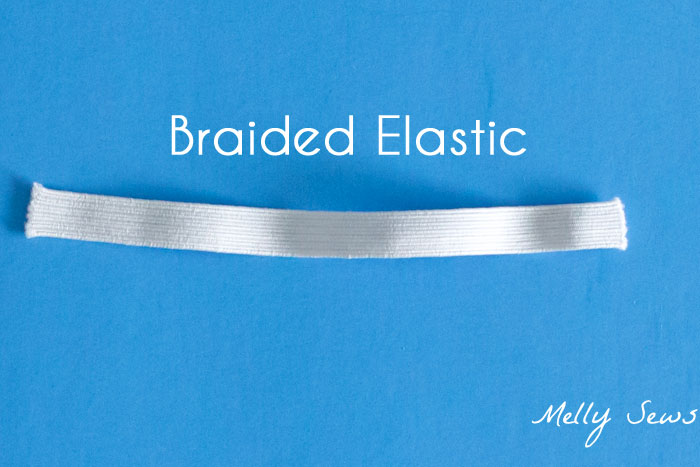
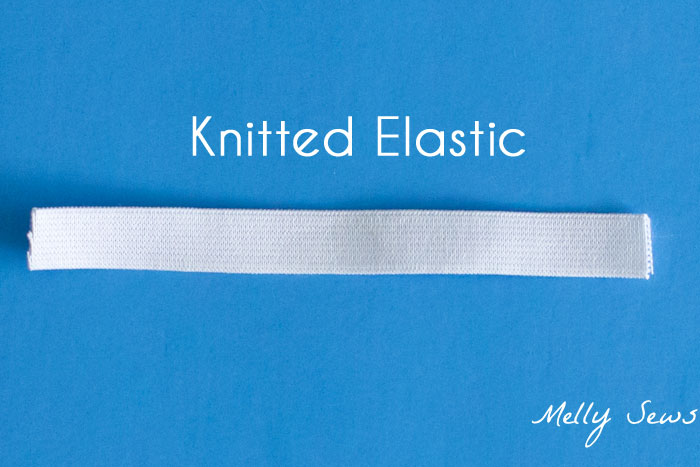
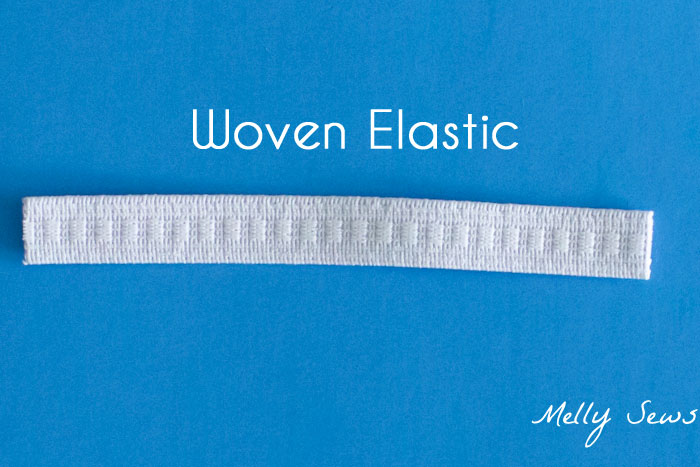
Chery
That was great info! Thx
Umaesew
Thank you for an jnteresting article.
Linda B
Thanks for laying this out for us Melly! There are so many things like this where so many choices that it is overwhelming. This really helps! Best, Linda
Margie
Thank you for this great info…..it’s always been a bit confusing????
Marla
Thanks for this article. I have been sewing for years and a lot of this was new information.
PattyP
I’ve been sewing for over 50 years and have always been confused about the properties of those three main elastics. I just always picked the one I knew I’d used successfully for a similar project before, but anythuing new I tried on my own like in upcycling garments tended to fail when elastic was used without undertsanding the properties of each. I truly appreciate the info! Very helpful and took care of everything I didn’t understand about them. Best blog ever.
Candy Kane
Thank you Melly for such great info. Many many years ago, there used to be an elastic for waistbands that was sewed on flat and then you pulled strings to gather it. It was so easy to use. I have looked off and on for several years but cannot find it. Do you know what it was called and if they still make it.
Melissa Mora
I’ve never heard of that kind – maybe someone else reading the comments can help.
Eulalee
Thanks for explaining
Leticia Z
Enjoyed all different information on elastic. Thank you will be putting to good use.
Sachini dilshani
Thank you soooo much.i love your teaching and sewing style,that is very amazing.i’m from sri lanka.
Deriliz
Thanks for the information. Some times it feels scare to choose from all of the types.
Karen Gregoire
Wish I had read this last night! Just added elastic to a wide waistband and I used knit when I had woven roll-over just sitting there! The waistband could have used that extra strength! Love all your helpful articles 🙂
Anne R.
Melly, your explanations are always SO helpful!. As several others have said, I’ve been sewing for many years and did not know most of this info about elastic. Really, really appreciate your website, newsletter, etc!
Diane D.
Thanks so much for this! I have a bunch of older Denim & Co. “jeans” that I don’t want to throw away, but the waistbands are shot. I’ve been trying to find the right elastic to use to replace them, and this will help. Now I just have to find where to get it.
Allisonf
Thanks for this info. Just what I was looking for.
Cindy
Awesome description.. easy to read and understand.
Thank you Artsydragon Cindy
Joyce
Thank you so much for the helpful information!!
Moira
Thanks for the useful information. This will be useful in knowing when repairing and up-cycling some of the vintage clothes I sell. I’ve book marked your page and will be reading the rest later.
Ellen F.
Thanks so much! I replaced the elastic in a fitted sheet and this helped me choose the type I could sew through.
Elthon
Thank you for your great, simple, and straight to the source, explanation! I have been sewing lingerie for two years as a side business, and always had issues with these elastics when used in different garments. I used mainly knits and lace a it is what I do, and at times I would get perfect undergarments using, say braided elastics but when used with other fabrics types, it just becomes bad! Thank you! 😉
Christina Sutton
Well I never Knew that, they say we learn something new everyday. Thank you for showing us.
Colleen Carpenter
Hi Melissa
Was googling elastic widths & your site came up. I got such a fright as my maiden surname is Melly & wondered if it was someone in our very large extended family.
Just a silly little comment for you to laugh about.
Kind regards
Colleen Carpenter (nee Melly)
Cape Town, South Africa
Lara
Thank you for this valuable information! I now have a better understanding of elastic and the application.
Dara
ALWAYS Such Good Information. Thanks Melly.
brendalynne1
thank you for another bit of info. I have never seen the buttonhole elastic and my question about the foldover elastic being ok for exterior application. YES thank you added to all the other thanks.